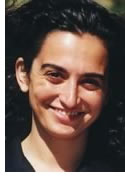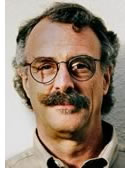
The American Academy in Rome announced the winners of the 106th annual Rome Prize Competition April 18. The prize provides fellowships from six months to two years for American artists and scholars to live and work at the Academy's 18-building, 11-acre site atop the Janiculum, the highest hill in Rome.
The five AIA architect winners are:
Architecture
 Rachel
Allen, AIA, Los Angeles (Mercedes T. Bass Rome Prize Fellowship),
who intends to "produce a digital video beginning from the notion
that Piranesi's Vedute di Roma is already a storyboard." Allen explains
that moviemaking is "a natural evolution from the watercolors and
sketches made by the traveling architects of the past."
Rachel
Allen, AIA, Los Angeles (Mercedes T. Bass Rome Prize Fellowship),
who intends to "produce a digital video beginning from the notion
that Piranesi's Vedute di Roma is already a storyboard." Allen explains
that moviemaking is "a natural evolution from the watercolors and
sketches made by the traveling architects of the past."
Margaret Helfand, FAIA, partner, Helfand Myerberg Guggenheimer Architects, New York City (Marion O. and Maximilian E. Hoffman Rome Prize Fellowship), who will ask "What is new now?" She says she will undertake "an exploration of the criteria for innovation in architecture, through words and images, at several key periods in Roman history, concluding with an extrapolation to possible future directions for architecture in the twenty-first century."
 Andrew
Zago, AIA, principal, Zago Architecture, Detroit (Franklin D. Israel
Rome Prize Fellowship), who writes, "I am currently working on a
book on Detroit that examines two divergent paths of contemporary urban
speculation: the city as noun and the city as verb. . . . The city of
Rome will serve as a touchstone and counterpoint to ideas developed in
Detroit."
Andrew
Zago, AIA, principal, Zago Architecture, Detroit (Franklin D. Israel
Rome Prize Fellowship), who writes, "I am currently working on a
book on Detroit that examines two divergent paths of contemporary urban
speculation: the city as noun and the city as verb. . . . The city of
Rome will serve as a touchstone and counterpoint to ideas developed in
Detroit."
Historic Preservation
and Conservation
Eleanor Esser Gorski, AIA, supervising
architect, Landmarks Commission of Chicago, City of Chicago, Department
of Planning and Development, Chicago says, "How does a city preserve
its history and architectural heritage yet remain competitive and encourage
new growth and design? My study at the Academy will focus on how successfully
the city of Rome has dealt with this question by cataloguing existing
historic resources and new developments in the city, examining local government
planning and cultural resource management as well as noting the role of
the public and local design professionals in the process."
 Randolph
Langenbach, Assoc. AIA, senior analyst, Federal Emergency Management
Agency, Oakland, Calif., and Washington, D.C., will do research on earthquakes.
"While at the Academy, I intend to further my research and writing
on traditional structures in earthquake areas with research on how past
earthquakes have affected different types of vernacular buildings in Italy,
and also historical records of how people in the past have responded to
the earthquake threat through modifications of building systems,"
he explains.
Randolph
Langenbach, Assoc. AIA, senior analyst, Federal Emergency Management
Agency, Oakland, Calif., and Washington, D.C., will do research on earthquakes.
"While at the Academy, I intend to further my research and writing
on traditional structures in earthquake areas with research on how past
earthquakes have affected different types of vernacular buildings in Italy,
and also historical records of how people in the past have responded to
the earthquake threat through modifications of building systems,"
he explains.
The academy awards prizes in the fields of architecture, design, historic preservation and conservation, landscape architecture, literature, musical composition, visual arts and ancient studies, medieval studies, Renaissance, and early modern studies and modern Italian studies. The Rome Prize is awarded through an annual, open competition juried by leading artists and scholars in the different disciplines. This year, more than 35 individuals convened into eight different juries to review applications. Jurors this year included Eric Owen Moss, FAIA, director of Southern California Institute of Architecture; Henry N. Cobb, FAIA, Pei Cobb Freed & Partners; Allan B. Jacobs, AIA, Jacobs MacDonald—Cityworks; Wendy Evans Joseph, FAIA, Wendy Evans Joseph Architecture; Chee Pearlman, AIA, Chee Company; and Dan Tuttle, AIA, principal, The SWA Group.
The other 2002–2003 Rome Prize winners are:
Ancient Studies
• Sinclair Bell, Cologne, Germany
• Rebecca Ruth Benefiel, Cambridge, Mass.
• Elizabeth Marlowe. Hamilton, N.Y.
• Peter O'Neill, Ames, Iowa
• James Woolard, Princeton, N.J.
Design
• Donald Albrecht, New York City
• Edward Weinberger, New York City
Landscape Architecture
• Joel Katz, Philadelphia
• Paul Seck, Brooklyn, N.Y.
Literature
• Jennifer Clarvoe, Gambier, Ohio
• Peter Orner, San Francisco
Medieval Studies
• Caroline J. Goodson, New York City
• M. Michèle Mulchahey, New York City
• Shona Kelly Wray, Prairie Village, Kan.
Modern Italian Studies
• Mary Gibson, Leonia, N.J.
• Molly Tambor, New York City
Musical Composition
• Mark Kilstofte, Greenville, S.C.
• David Sanford, Northampton, Mass.
Renaissance and Early
Modern Studies
• Wietse de Boer, Indianapolis
• Jill J. Deupi, Fredericksburg, Va
• Kenneth Gouwens, Storrs, Conn.
• Shilpa Prasad, Baltimore
• Christopher Wood, New York CIty
Visual Arts
• Linda Besemer, Los Angeles
• John Schlesinger, Philadelphia
• Maureen Selwood, Santa Monica, Calif.
• Arthur Simms, Long Island City, N.Y.
For more than a century, the American Academy in Rome has served as one of the leading centers for independent study and advanced research in the arts and humanities. Each year the Academy invites applications for its prestigious Rome Prize Competition, which are due November 1. For more information, visit www.aarome.org.
Copyright 2002 The American Institute of Architects. All rights reserved.
![]()
|
For more than a century, the American Academy in Rome has served as one of the leading centers for independent study and advanced research in the arts and humanities. Each year the Academy invites applications for its prestigious Rome Prize Competition, which are due November 1. For more information, visit www.aarome.org. |
|